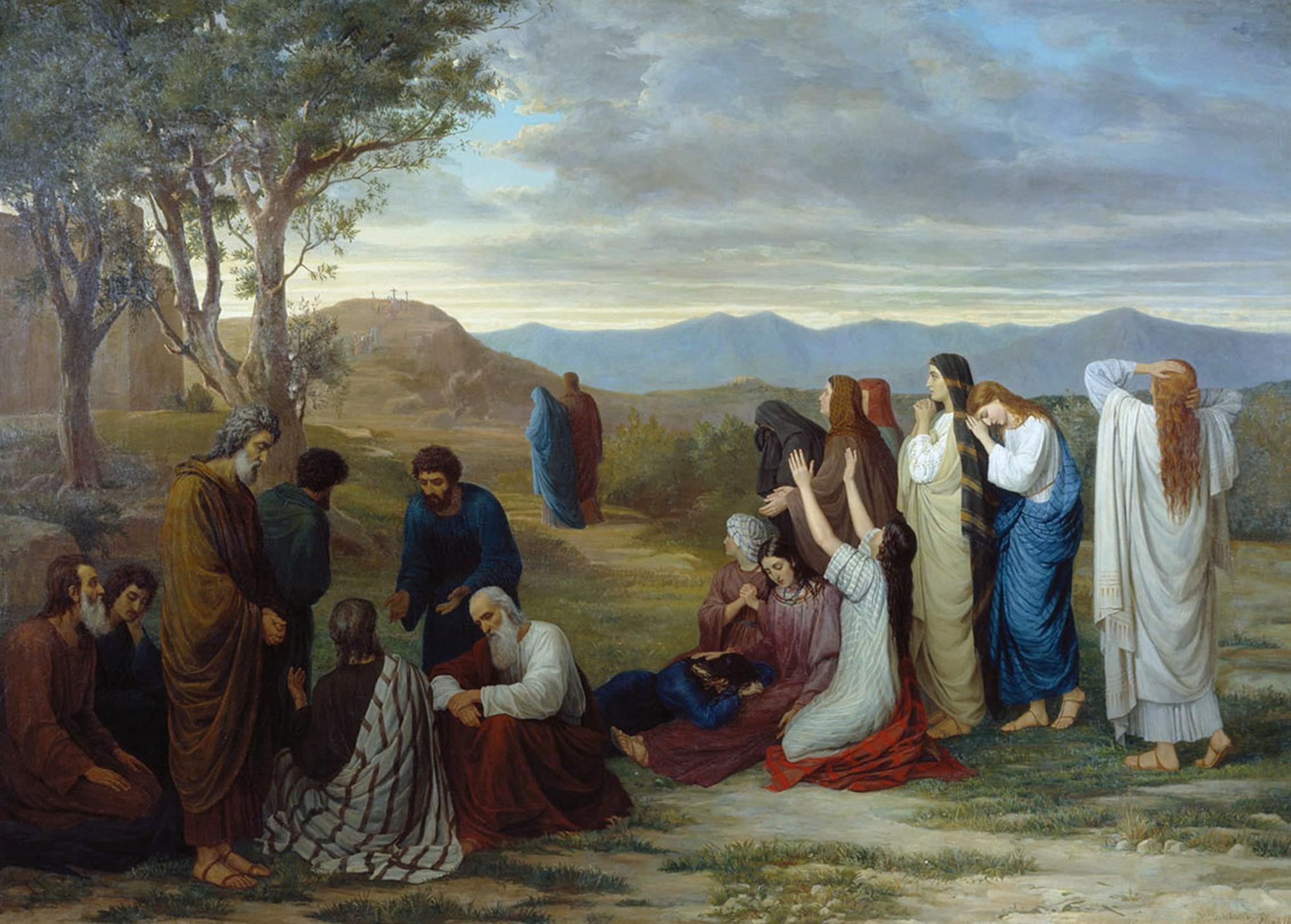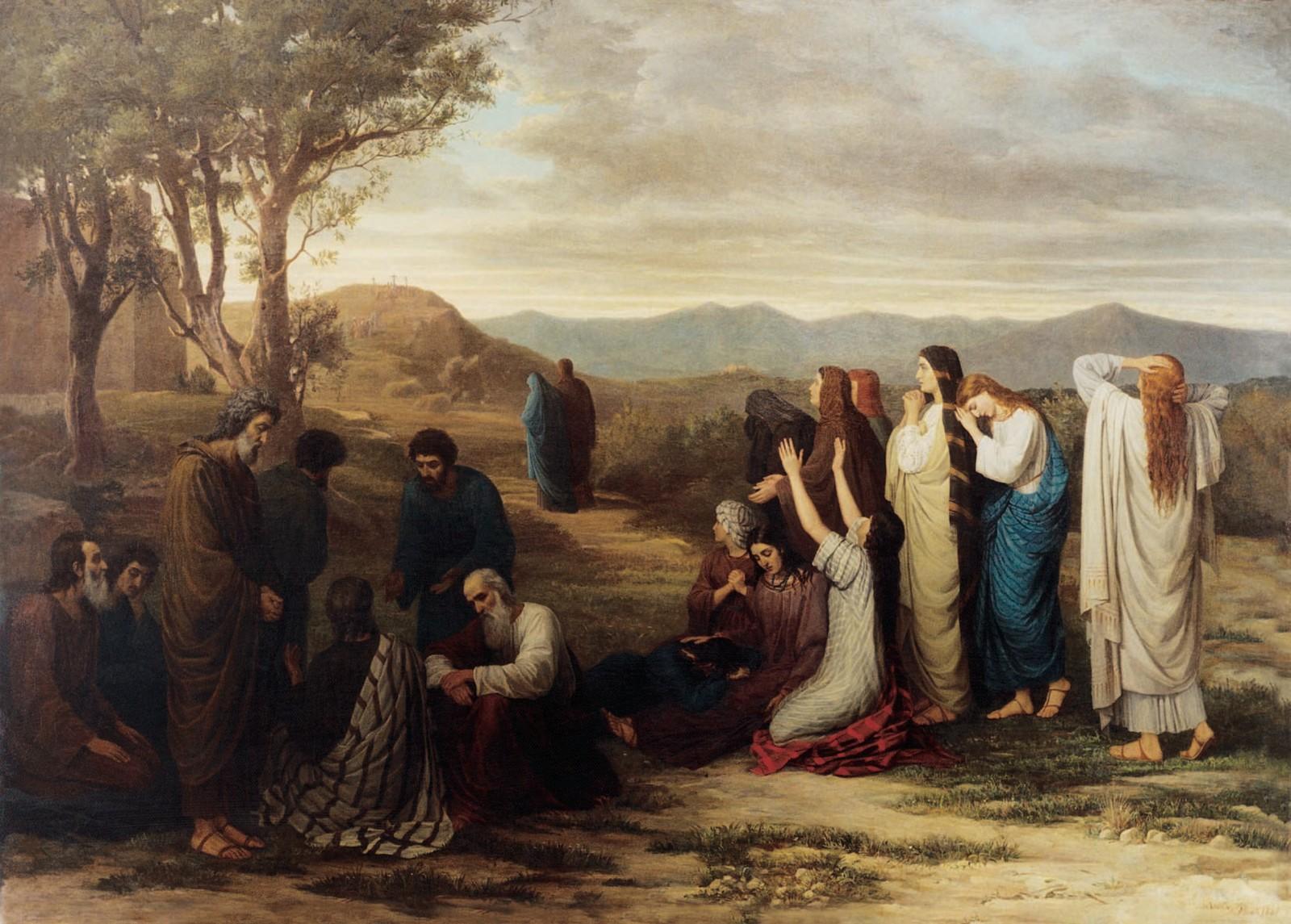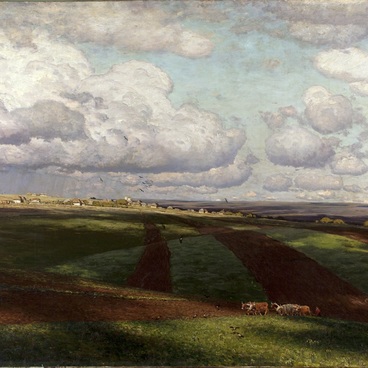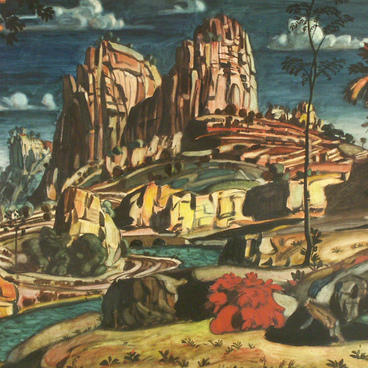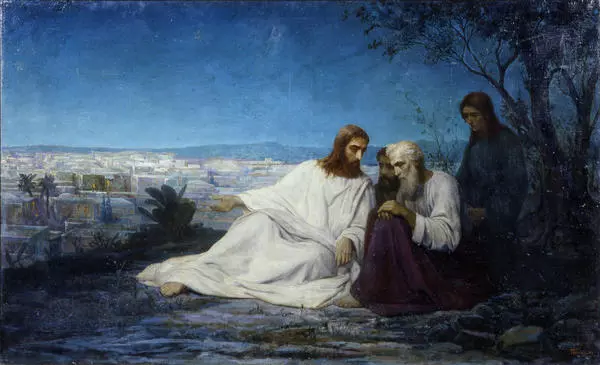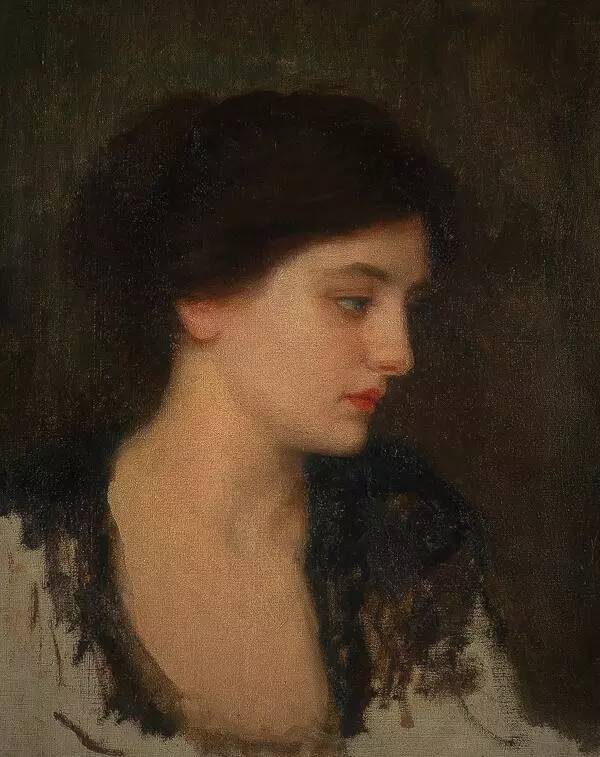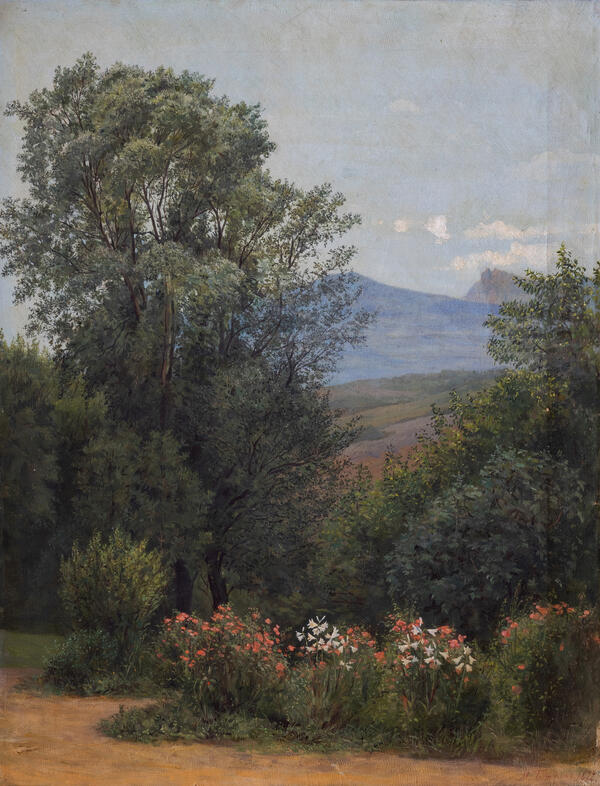Mikhail Botkin was a professor of historical painting, engraver, collector, art critic, and archaeologist. He was one of the talented sons of the remarkable Botkin family. He adhered to the canons of academic painting. Throughout the history of the Academy, its representatives remained faithful to classical traditions, creating sublime noble images in painting, sculpture, and architecture. Biblical history and antiquity were the main source of inspiration for the academics.
In 1867, in Rome, Botkin creates the work ‘Wives looking at Calvary from afar.’ It is dedicated to one of the main Gospel episodes of the crucifixion of Jesus Christ on Mount Golgotha near Jerusalem: ‘And many women were there, watching from a distance. They had followed Jesus from Galilee to minister to Him’. The artist transmits a state of deep grief that took over the people. Golgotha, the place of execution, is assigned to the distant plan. The topic of sorrow and despair, love and devotion is developed through the main characters of pious wives accompanying Jesus during his sub-celestial allegiance. They showed courage, stood next to the cross, were present at the burial, and then came to the tomb of the Savior, carrying for the last tribute of love and worship. Evangelists, naming the different names of pious wives, unfailingly mention Mary Magdalene. She was the one honored to see the first Resurrection of Christ. The power of her passionate ministry led to this woman’s likening to the apostles. She is depicted in white clothes on the right with her back to the viewer.
The bas-relief arrangement of figures, the impeccable drawing, and the beauty of the landscape attest to the artist’s respect for the classical canons. The composition of the painting reveals the influence of the famous work ‘The Appearance of Christ Before the People’, made by the outstanding artist Alexander Ivanov. At the end of the 1860s, the work was exhibited in the St. Petersburg Academy of Arts and then stored in the studio of Botkin.
In 1925, the daughter of the artist donated to the Omsk Museum nine works of her father, including the painting ‘Wives looking at Calvary from afar’.
In 1867, in Rome, Botkin creates the work ‘Wives looking at Calvary from afar.’ It is dedicated to one of the main Gospel episodes of the crucifixion of Jesus Christ on Mount Golgotha near Jerusalem: ‘And many women were there, watching from a distance. They had followed Jesus from Galilee to minister to Him’. The artist transmits a state of deep grief that took over the people. Golgotha, the place of execution, is assigned to the distant plan. The topic of sorrow and despair, love and devotion is developed through the main characters of pious wives accompanying Jesus during his sub-celestial allegiance. They showed courage, stood next to the cross, were present at the burial, and then came to the tomb of the Savior, carrying for the last tribute of love and worship. Evangelists, naming the different names of pious wives, unfailingly mention Mary Magdalene. She was the one honored to see the first Resurrection of Christ. The power of her passionate ministry led to this woman’s likening to the apostles. She is depicted in white clothes on the right with her back to the viewer.
The bas-relief arrangement of figures, the impeccable drawing, and the beauty of the landscape attest to the artist’s respect for the classical canons. The composition of the painting reveals the influence of the famous work ‘The Appearance of Christ Before the People’, made by the outstanding artist Alexander Ivanov. At the end of the 1860s, the work was exhibited in the St. Petersburg Academy of Arts and then stored in the studio of Botkin.
In 1925, the daughter of the artist donated to the Omsk Museum nine works of her father, including the painting ‘Wives looking at Calvary from afar’.
